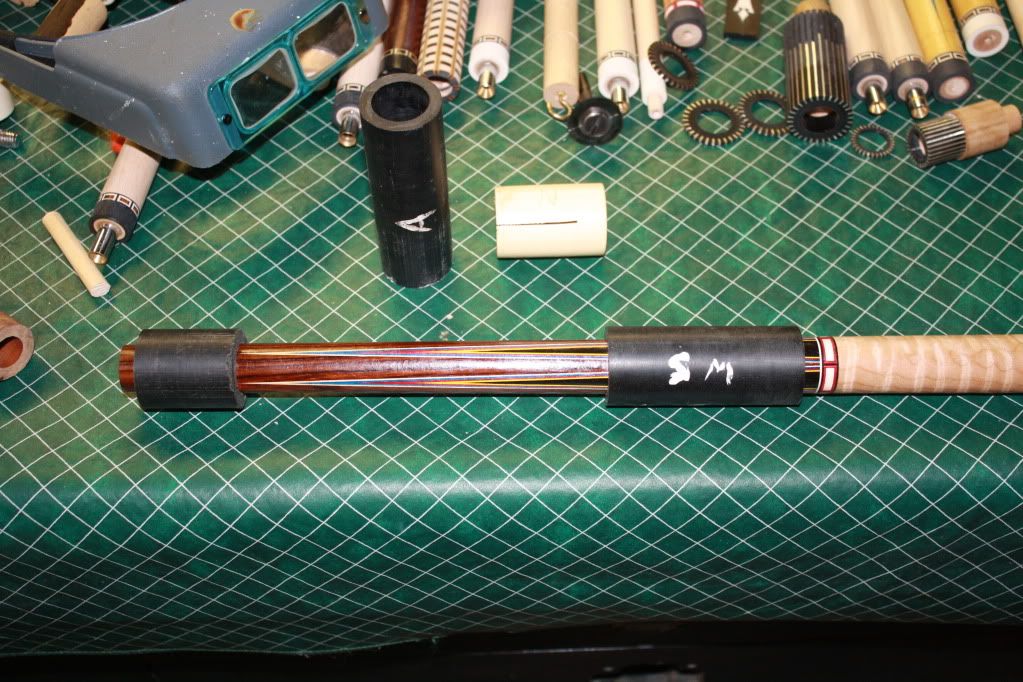..now how do you guys join a joint with no ring...lol.
Same way but with no ring. I do it on every cue. I have tried a buzz ring a time or two but have never took it out of experimental phase. I found it to be unnecessary, at least in my cues. Clean, square joint faces that lock tightly together, dead centered tenon that fits smoothly but not tightly, and the connecting screw whether part of the tenon wood or a metal screw, all are necessary for a joint that won't buzz. Cues that don't assemble with zero wobble at the "A" joint, and cues where there is some type of internal stress at the joint from something being slightly off, will almost certainly acquire a buzz. Cues that go together solid, straight, centerline, will almost never acquire a buzz. Basically, if your machining isn't dead on, you'll have troubles. If your machining is sound then you have very little to ever worry about.
